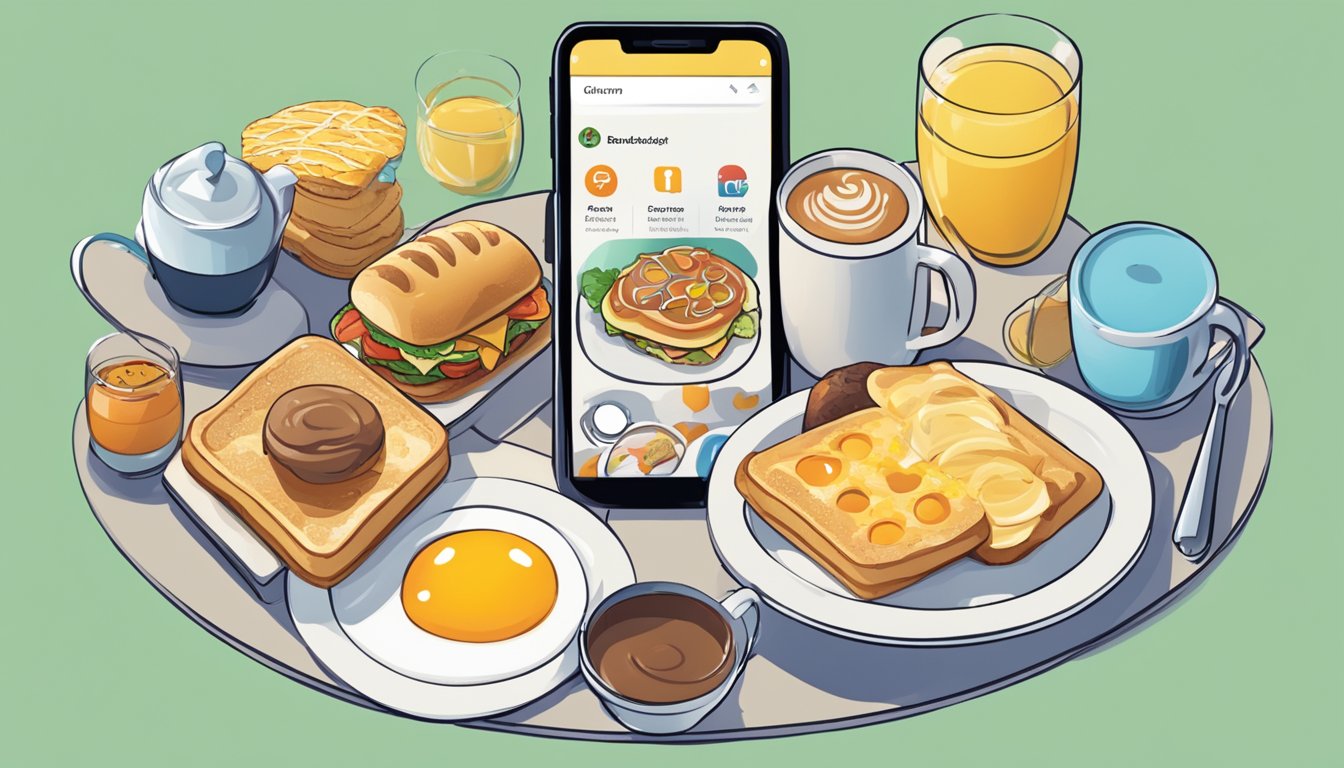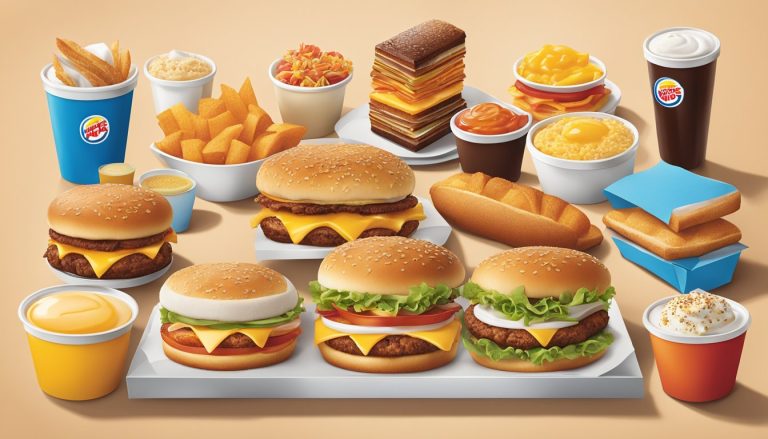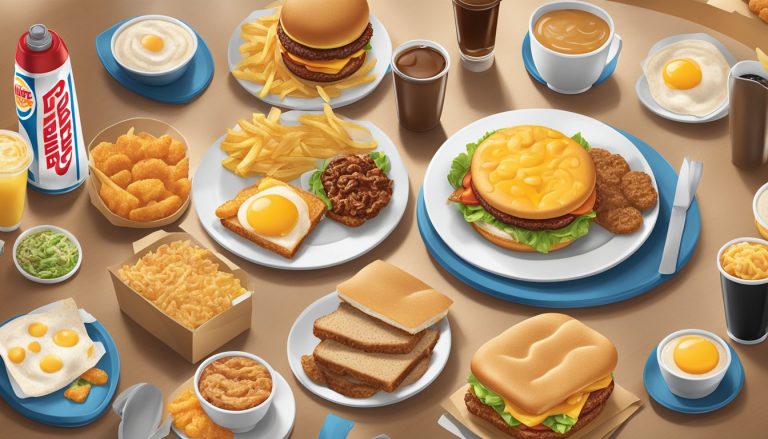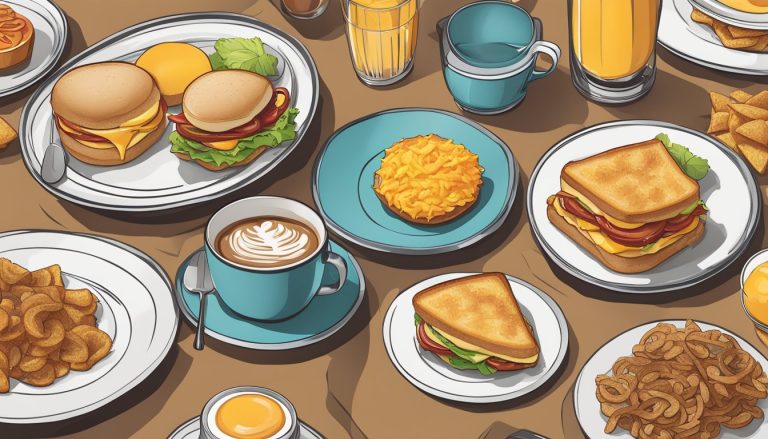Burger King has embraced social media as a powerful tool to promote its breakfast offerings and engage with customers. The fast food giant leverages platforms like Facebook, Instagram, and Twitter to showcase its morning menu items and drive foot traffic to its restaurants during breakfast hours.
Through targeted social media campaigns, Burger King creates buzz around limited-time breakfast promotions and new product launches, encouraging followers to visit their local BK for morning meals. These campaigns often feature eye-catching visuals, humorous content, and interactive elements to capture audience attention and boost engagement.
BK’s social media strategy for breakfast promotion extends beyond simple product advertisements. The company uses social listening techniques to tap into trending topics and themes, creating timely content that resonates with its audience. By incorporating regional flavors and cultural references, Burger King tailors its breakfast-related social media posts to appeal to local tastes and preferences in different markets.
The Evolution of BK’s Marketing Efforts
Burger King’s marketing journey has been marked by bold campaigns and innovative digital strategies. The fast food giant has continuously adapted its approach to resonate with changing consumer preferences and emerging technologies.
From ‘Have It Your Way’ to Modern Campaigns
Burger King’s iconic slogan “Have It Your Way” debuted in 1974, emphasizing customization and customer choice. This message evolved over time, reflecting shifts in consumer values and market dynamics. In 2004, BK launched the “Subservient Chicken” campaign, an early viral marketing success that allowed users to give commands to a person in a chicken costume via a website.
The brand’s marketing efforts took a digital turn with the rise of social media. BK’s campaigns became increasingly interactive and tech-savvy, exemplified by the 2018 “Whopper Detour” promotion. This innovative campaign used geofencing technology to offer customers one-cent Whoppers when they were near a McDonald’s location.
Innovative Use of Social Channels
BK has leveraged social media platforms to create buzz and engage customers in unique ways. The brand’s social strategy often includes witty responses, playful jabs at competitors, and trendjacking popular topics. BK’s Twitter account, known for its humorous and sometimes provocative posts, has garnered a large following.
The company has also embraced user-generated content and influencer partnerships to extend its reach. BK’s social campaigns frequently encourage customer participation, such as sharing photos or creating memes. These efforts have helped BK maintain relevance in a crowded fast food market and connect with younger consumers who are active on social platforms.
Understanding BK’s Target Audience

Burger King tailors its breakfast offerings to appeal to specific customer segments. The fast food chain leverages social media to connect with these groups and promote its morning menu items.
Demographics and Preferences
Burger King’s breakfast target audience primarily consists of millennials and Gen Z consumers aged 18-34. This group values convenience, affordability, and customization options. They seek quick, tasty meals to start their day without breaking the bank.
BK’s breakfast menu caters to diverse tastes. Options range from classic choices like the Croissan’wich to newer items like the Breakfast Burrito. The chain also offers vegetarian selections to appeal to health-conscious customers.
Social media campaigns highlight BK’s competitive pricing and customizable options. This resonates with budget-conscious young adults looking for a satisfying morning meal.
Engaging the Digital Consumer
Burger King recognizes the importance of reaching tech-savvy customers through digital channels. The QSR giant uses platforms like Instagram, Twitter, and TikTok to showcase its breakfast offerings.
BK’s social media strategy includes eye-catching visuals of menu items and limited-time promotions. The brand creates shareable content to encourage user engagement and increase brand visibility among its target demographic.
Mobile ordering and delivery options cater to the on-the-go lifestyle of young professionals. BK promotes these tech-driven conveniences through targeted social media ads and push notifications.
The chain also leverages influencer partnerships to extend its reach. Collaborations with popular content creators help BK tap into niche audiences and build credibility among younger consumers.
Strategic Brand Positioning on Social Media
Social media platforms offer unique opportunities for fast food chains to showcase their brand identity and differentiate themselves from competitors. Effective positioning can highlight key offerings and create a strong connection with target audiences.
Messaging and Brand Equities
BK’s social media strategy emphasizes its flame-grilled burgers and customizable menu options. The brand leverages The Whopper as a central icon, showcasing its size and premium ingredients. BK’s posts often feature close-up shots of menu items, emphasizing quality and freshness.
Bold, playful language reinforces BK’s irreverent personality. The brand frequently uses humor and pop culture references to engage younger audiences. User-generated content is shared to build authenticity and community.
BK highlights its “Have It Your Way” slogan, promoting customization options. This messaging differentiates BK from more standardized fast food offerings.
Competitive Landscape
BK positions itself as a bold alternative to McDonald’s, its primary competitor. Social media campaigns often feature direct comparisons, highlighting The Whopper’s size advantage over the Big Mac.
The brand emphasizes flame-grilling as a key differentiator in the fast food space. Posts showcase BK’s cooking method, contrasting it with competitors’ flat-top grills.
BK leverages trending topics and events faster than some competitors, appearing more agile and culturally relevant. The brand engages in playful banter with other fast food chains, reinforcing its confident, edgy persona.
Localized content strategies help BK compete against regional fast food players in specific markets.
Building Campaigns Around Customer Interactions

BK’s breakfast promotions leverage social media to foster direct engagement with customers. These campaigns tap into user-generated content and integrate seamlessly with drive-thru and mobile ordering experiences.
Leveraging User-Generated Content
BK encourages customers to share photos and reviews of their breakfast meals on social platforms. The company regularly features the best user submissions in their marketing materials, creating a sense of community. Hashtag campaigns like #BKBreakfastClub incentivize participation. BK also runs contests where customers can win prizes for creative breakfast-themed posts. This approach builds brand loyalty and provides authentic content for advertising campaigns.
Drive-Thru and Mobile Integration
BK’s social media campaigns directly link to its drive-thru and mobile app experiences. The company promotes exclusive app-only breakfast deals through targeted social ads. QR codes shared on social platforms allow customers to quickly access mobile ordering. BK also uses location-based social media ads to alert nearby users about drive-thru breakfast specials. The integration of social media with these ordering channels creates a seamless customer journey from awareness to purchase.
Crafting Effective Social Media Messages

Crafting compelling social media content for BK’s breakfast promotion requires a strategic approach to tone, presentation, and media investment. These elements work together to maximize reach and engagement with the target audience.
Tone and Presentation
BK’s social media messages should adopt a friendly yet professional tone that aligns with the brand’s identity. Posts should be concise, using clear language to highlight breakfast menu items and promotions. Visual content is crucial – high-quality images or short videos of appetizing breakfast offerings can capture attention quickly.
Incorporating humor or witty wordplay can make posts more shareable, but it’s important to maintain brand consistency. Timing is key; scheduling posts during peak breakfast hours or just before can remind followers about BK’s morning options. Engaging captions that ask questions or encourage responses can boost interaction rates.
Media Investment and Reach
Strategic media investment is essential for expanding the reach of BK’s breakfast messages. Paid social media advertising allows for precise targeting of potential customers based on demographics, interests, and online behaviors. Allocating budget to promoted posts during key breakfast campaign periods can significantly increase visibility.
Collaborating with influencers who resonate with BK’s target audience can amplify message reach. These partnerships should feel authentic and align with the brand’s values. Tracking engagement metrics and adjusting strategies based on performance data is crucial for optimizing media spend.
Cross-platform promotion, utilizing different social media channels, can help reach diverse audience segments. Each platform may require tailored content formats to maximize effectiveness.
Measurements and Analytics for Success

Effective social media analytics provide crucial insights for optimizing BK’s breakfast promotions. Key metrics and data-driven strategies help refine marketing efforts and boost campaign performance.
Understanding Social Metrics
Engagement rates measure audience interaction with BK’s breakfast content. These include likes, comments, shares, and clicks. Reach and impressions track how many users see the posts. Follower growth indicates increasing brand awareness.
Conversion metrics link social media activity to breakfast sales. Click-through rates show how often users take action after seeing ads. ROI calculations compare ad spend to revenue generated from breakfast promotions.
Sentiment analysis gauges public perception of BK’s breakfast offerings. Positive mentions and reviews signal successful campaigns. Negative feedback highlights areas for improvement.
Adapting Strategies Based on Insights
Data reveals optimal posting times for maximum breakfast engagement. Analytics show which content types resonate best – videos, images, or polls. This informs future content creation.
A/B testing different ad formats helps identify winning strategies. Comparing performance across platforms guides budget allocation. Geographic data pinpoints regions with high breakfast demand.
Demographic insights refine audience targeting. Age, gender, and interests of top engagers shape personalized messaging. Competitor analysis reveals gaps in the market BK can exploit.
Tracking hashtag performance aids in creating viral breakfast campaigns. Influencer collaborations’ impact becomes measurable through dedicated metrics. Real-time monitoring allows quick adjustments to underperforming promotions.
Case Studies in BK’s Breakfast Promotion
Burger King’s innovative breakfast promotions have leveraged social media to create buzz and drive engagement. These campaigns showcased the brand’s creativity and ability to connect with consumers in unique ways.
The Impact of ‘Whopper Virgins’
The ‘Whopper Virgins’ campaign featured people from remote areas tasting Whoppers for the first time. BK shared video content across social platforms, generating widespread discussion. The campaign’s novelty sparked curiosity and encouraged sharing.
Viewers debated the ethics and cultural sensitivity of the approach. This controversy amplified the campaign’s reach, keeping BK in the spotlight. The promotion indirectly boosted breakfast sales by increasing overall brand awareness and foot traffic.
The ‘Whopper Sacrifice’ Phenomenon
BK’s ‘Whopper Sacrifice’ promotion on Facebook asked users to unfriend 10 people in exchange for a free Whopper. The campaign quickly went viral, with participants sharing their actions on social media.
Over 230,000 friends were “sacrificed” within a week. Facebook eventually shut down the app due to privacy concerns. This unexpected twist further fueled online discussions about the promotion.
The campaign’s success demonstrated BK’s ability to create engaging social media content. It indirectly supported breakfast sales by driving traffic to BK locations and reinforcing the brand’s innovative image.
Concluding Thoughts on BK’s Social Media Influence

Burger King’s strategic use of social media has significantly impacted its breakfast market share. The brand’s dynamic online presence has bolstered its positioning as a fun, innovative fast-food option.
BK’s social media campaigns have effectively highlighted its value menu offerings. Clever hashtags and engaging content have drawn attention to affordable breakfast choices, appealing to budget-conscious consumers.
The company’s digital marketing efforts have successfully targeted younger demographics. By leveraging trending platforms and creating shareable content, BK has expanded its reach to new potential guests.
Social media analytics have allowed BK to refine its messaging and product offerings. Real-time feedback from customers has informed menu adjustments and promotional strategies.
BK’s social media influence extends beyond direct sales. It has fostered brand loyalty and community engagement, turning casual diners into brand advocates.
The chain’s ability to quickly respond to competitors and market trends through social channels has kept it relevant in the fast-paced breakfast segment. This agility has proven crucial in maintaining market position.
Looking ahead, BK’s continued investment in social media marketing is likely to play a key role in shaping breakfast trends and consumer perceptions in the quick-service restaurant industry.




